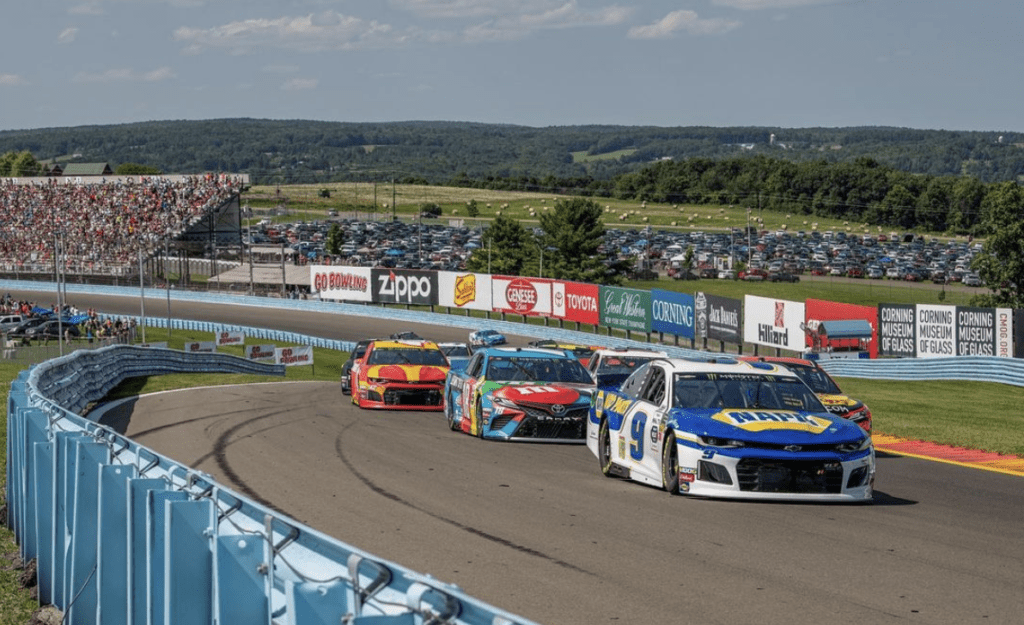WATKINS GLEN INTERNATIONAL
No racetrack in America has played as important a role in the history of auto-racing as the Watkins Glen International. Today a host to various NASCAR and Indy events, it was for decades the home of the United States Grand Prix, and the center of racing culture in the nation. While a large part of the track’s fame comes from the Esses — the sinuous and often treacherous curves that make every race an edge-of-your-seat event — the Glen’s picturesque location at the south end of Seneca Lake has attracted visitors for the better part of a century.

These days, NASCAR’s big stars stop by every summer as part of the Sprint Cup Series; the famed “Sahlen’s Six Hours of the Glen” puts sport car drivers through an arduous test of endurance; and the U.S. Vintage Grand Prix is the biggest event in the country for historic car racing. But throughout its history, The Glen has served as a barometer of the varying fortunes and vast changes in the auto-racing world.
In 1948, an ambitious young law student named Cameron Argetsinger decided that the Finger Lakes needed a bit more excitement. With help from local businessmen, he organized the first Watkins Glen Grand Prix, in which drivers raced through wooded lanes and down the village’s avenues. The race was a big hit: the Grand Prix became a national draw, and thousands of tourists filled the town to catch sight of their favorite motorists. But with some gnarly crashes and the death of a spectator in 1952, Argetsinger and the other race backers decided a permanent facility was needed, and so The Glen was born as a 2.3-mile course in 1957 (the track has since been extended to 3.4 miles).
As host of the annual United States Grand Prix, the nation’s only event on the Formula One circuit, Watkins Glen welcomed the biggest stars in international racing, and became a destination for motor enthusiasts from around the world. Tourism in the region benefited greatly from the high profile of the track, and things went well all through the 1960s and ’70s. With the advent of ever-faster cars, however, and poor financial management on the part of the tracks’ owners, The Glen became the site of fatal accidents and scandals. In 1981, the race was removed from the Formula One circuit and, despite several other events that drew fans to the course, the track was shutdown.
After two years of stagnation, improvements to the track led to a slow revival in the International’s fortunes in the late ’80s and ’90s. Major NASCAR events and the return of the famous six-hour endurance format attracted greater attention to Watkins Glen from the growing American car-racing world. In 2005, the IndyCar series arrived, signaling a rebirth of the good old days of open-seat racing at the Glen. And throughout the past decade, NASCAR championship series like the Nextel, Busch, and Sprint Cups have made the venue a major stop on the stock car circuit. Recent improvements to the track have only increased the Esses’ allure.
For die-hard fans, Opening Weekend each year offers the opportunity to tack their own cars onto the track. After that and throughout the summer, major and minor races take place on an irregular schedule — book your tickets early, as these events tend to sell out. And while you’re in town, don’t forget to stop by the International Motor Racing Research Center in town, which offers a variety of materials tracing the history of car racing both in Watkins Glen and throughout the world.
http://www.theglen.com/
